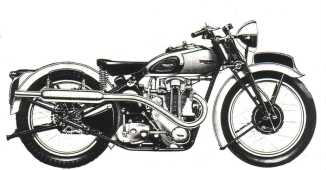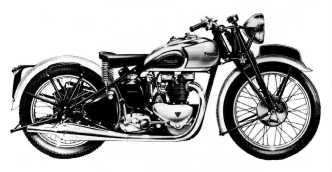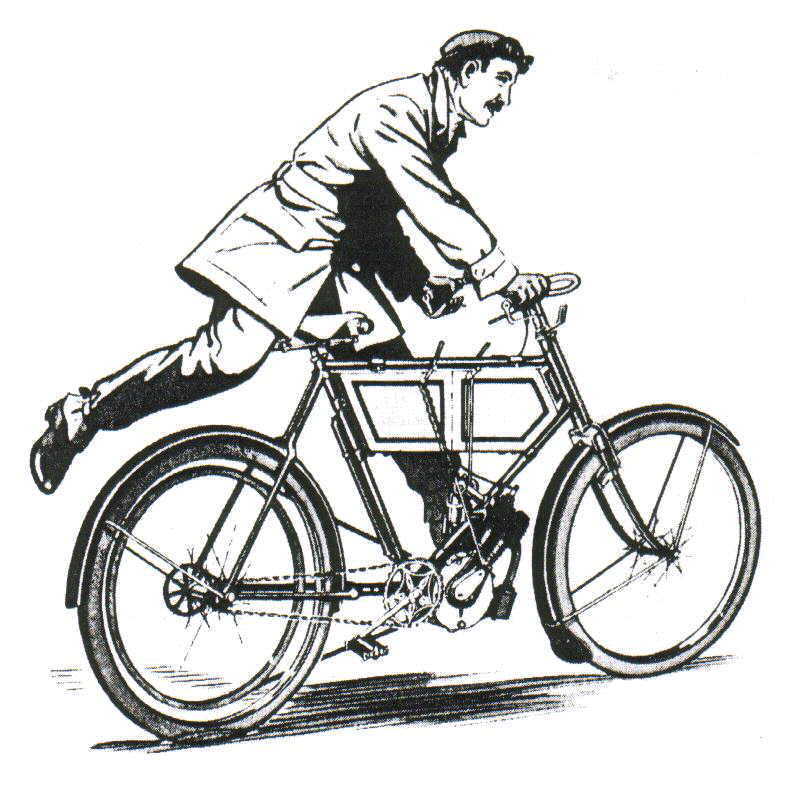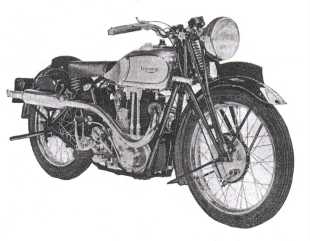
1939 Tiger 70 |

1939 Tiger 100 Twin |
|
Jack Sangster, the owner of Triumph motor cycles from January
1936, moved Edward Turner across from Ariel, along with Bert Hopwood
as Chief Draughtsman, in order to get something
done to boost Triumph's flagging product line and sales figures.
Val Page had produced good engines, and Turner acknowledged this, but
they lacked the 'eye appeal' to attract customers.
With no time to design anew, and not really necessary as the 'basics'
were good, Turner set to in providing that 'eye appeal' and also in
providing a meaningful name. Thus, with small 'tinware' changes and
'shell blue sheen' replacing the drab black, by April Turner had three
new models on the road for testing. The Model L2/1 became the Tiger 70,
the Model 3/2 became the Tiger 80 and the Model 5/5 became top of the
range Tiger 90. (The numbers gave an indication of their top speeds.)
Initially the original twin down-tube frames were used, and even
the engine numbers continued their sequences, but with an addition to
indicate that they were fitted to a Tiger.
With time to make further improvements later models were given
more sporting looking single down-tube frames and further 'tinware'
improvements were made, and these three models continued through to
1939, being joined in their last year by a further 500cc Tiger model
- the Tiger 100 Twin of 1939.
For the full story of how Triumph motor cycle manufacture came
to be changed from the original Triumph Cycle Company to Jack Sangster's
Triumph Engineering Company you need to read my 'Triumph Story'
booklets.
|
Brief Specifications and Variations
The four Tiger Models were;
Tiger 70. 249cc ohv. 63mm bore X 80mm stroke. 16 bhp at 5,800 rpm.
Tiger 80. 343cc ohv. 70mm bore X 89mm stroke. 20 bhp at 5,700 rpm.
Tiger 90. 493cc ohv. 84mm bore X 89mm stroke. 28.29 bhp at 5,800 rpm.
Tiger 100. 498cc ohv Twin. 63mm bore X 80mm stroke. 33-34 bhp at 7,000 rpm.
All had 4-speed, foot-change gearboxes.
Electric lighting was now standard, and a rear brake light
was an optional extra, along with a number of other optional fittings.
There was no alternative engine sprocket listed for the Tiger
70 and 80 Models as these were not considered of sufficient capacity
for hauling a sidecar.
I do not currently have enough details from surviving machines to be able to
give an approximate figure for the production of individual models.
Codes indicating month and year of assembly were discontinued, and
while the 'model year' was indicated with an engine number that does
not indicate when it was assembled, for 1938 'models', for example,
were starting to be assembled from around August or September 1937.
Therefore at this time the approximate figures which I have need
to be 'refined' before I can release any figures.
The have knowledge of these Val Page Triumph models surviving in
Australia, Britain, France, Holland, New Zealand and South Africa.
|

Jump Back to
the Beginning
|

Return to the
Post-Vintage Index
|
|







